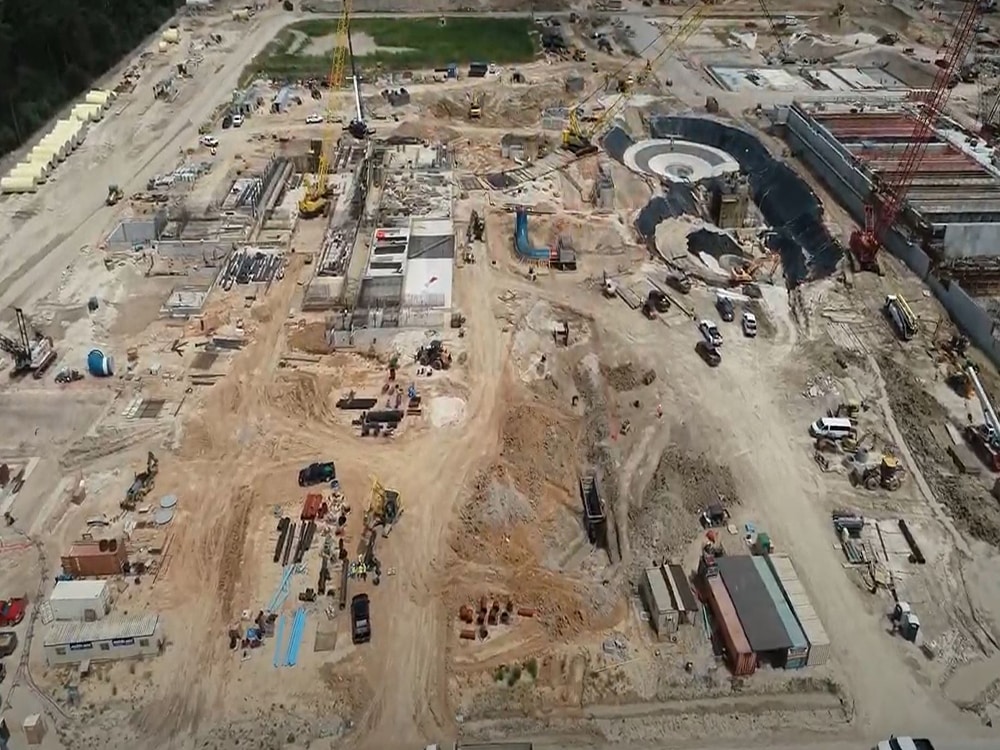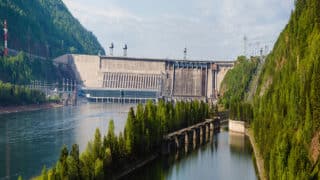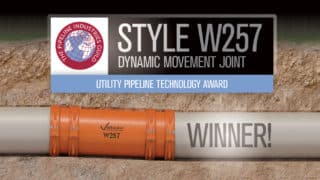Posted on July 22, 2020
In Texas, there have been major shifts in the sources for water extraction. Measures such as the Surface Water Supply Project are being executed to address the land subsidence that the extraction of groundwater has caused. Victaulic’s solutions for the Infrastructure Market are being utilized to address this critical problem in Texas.
Subsidence in the Lonestar State
For years, groundwater has been the region’s primary source of water. In order to extract the groundwater, wells, or pipe, must be drilled into the aquifer to allow water to be brought to the surface by a pump. When large amounts of groundwater have been extracted from certain types of rocks, such as fine-grained sediments, subsidence occurs. Land subsidence is the gradual settling or sudden sinking of the Earth’s surface due to underground material movement. Removing water from the fine-grained aquifer sediments compresses the aquifer leaving less pore space available to store water resulting in the lowering (sinking or settling) of the land surface.
In the Houston-Galveston Region of Texas, groundwater withdrawals first began in 1863 when extractions from the Chicot and Evangeline aquifers started. By 1975, groundwater withdrawals exceeded 450 million gallons per day. The demand for water continued to increase as the population in this region grew over the years. Groundwater withdrawals were supplying municipal, commercial, industrial, and agricultural facilities with the water that was demanded.
Due to the result of the excessive pumping of groundwater, much of the ground surface in the Houston-Galveston region of Texas as subsided or sunk. In fact, the Houston-Galveston region represents one of the largest areas of subsidence in the United States. This region was facing substantial consequences due to land subsidence, such as a reduction in the ability to store water in an aquifer, collapses of water well casings, partially or completely submerged land, and damages to roadways, bridges, building foundations, and other infrastructure.
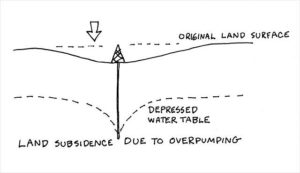
This sparked a movement in Texas to shift their source of water from groundwater to surface water.
Stop the Land Subsidence
The West Harris County Regional Water Authority and the North Fort Bend Water Authority were created in the early 2000s to combat subsidence in the region. In partnership with the City of Houston, these two authorities are undertaking a large-scale water supply project. The Surface Water Supply Project will convert groundwater from wells to lake and river water, or surface water, to comply with subsidence district requirements. The goal is to have a 60% reduction of groundwater usage by 2025; and an 80% reduction of groundwater usage by 2035.
In order to meet the anticipated demand increase while also shifting to utilizing surface water in Texas, the Luce Bayou Interbasin Transfer Project (LBITP) was developed by the Coastal Water Authority. The LBITP is a $318 million water supply project that includes a 500 MGD pump station (located on a 90-acre parcel), approximately 3.6 miles of pipelines, setting basin and maintenance facility, 23 miles of open canals to convey the untreated water to an outfall structure at Lake Houston. The LBITP will connect the raw water delivery, with treatment capacity, to the water supply for the region.
At Lake Houston, an intake pump station will transfer the water to the Northeast Water Purification Plant (NEWPP). In addition to the LBITP, there is also a project underway at NEWPP to expand the water treatment facility. The Northeast Water Purification Plant Expansion Project was created in preparation for the additional quantities of raw water in Lake Houston that are being supplied from Luce Bayou. The results of this project will add an additional 320 million gallons per day of water treatment capacity.
After transfer and treatment, more than 300 water districts and city customers in the northern and western Houston metro area and northern Fort Bend County will reap the benefits of the treated water. According to the 2011 State Water Plan, 9+ million people will be utilizing the benefits from the LBITP by 2060.
Victaulic’s Role in the Changing Texas Landscape
Victaulic’s Texas Infrastructure Team has worked closely with all of the stakeholders in the Surface Water Supply Project. At both the LBITP and the NEWPP Expansion Project, Victaulic’s grooved solutions for the infrastructure and water market are being heavily utilized.
An important aspect of the LBITP is the pigging retrieval station that will be utilized for regular maintenance on the pipelines due to zebra mussels present in the water supply. The pig retrieval station will need to withstand not only the forces of the day to day operations, but also accommodate the settlement presented by the terrain.
The use of Victaulic’s grooved technology at the pigging retrieval station was successfully able to reduce the station’s footprint because the design of the flexible couplings can absorb the forces to the pigging system. Reducing the station size was achievable thanks to the specially designed Victaulic components, such as Victaulic’s Dynamic Movement Joints.
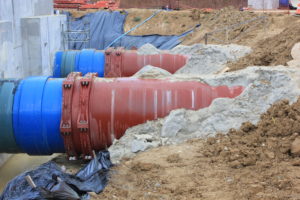
At NEWPP, Victaulic was able to provide ideal solutions and reduce risk to the expansion of the existing water treatment facility. Victaulic products, such as Dynamic Movement Joints, AGS, and Bolted Split Sleeves, are being utilized throughout the expansion efforts. The grooved technology of the products is ideal for this project because of their ability to accommodate settlement in confined spaces as well as providing solutions for the system construction.
“In Texas, the complex challenges of the changing water demands and supply requires innovated infrastructure solutions” according to Victaulic’s Craig West. As an Infrastructure Manager for Victaulic in Texas, West has been highly involved in helping to provide solutions to the complex challenges. “The use of Victaulic’s solutions for the Infrastructure market support Texas’s ever-changing need to evolve and meet the current and future water demands.”
Click here to learn more about Victaulic’s Dynamic Movement Joint.
Learn more about Victaulic’s role in the infrastructure market.
